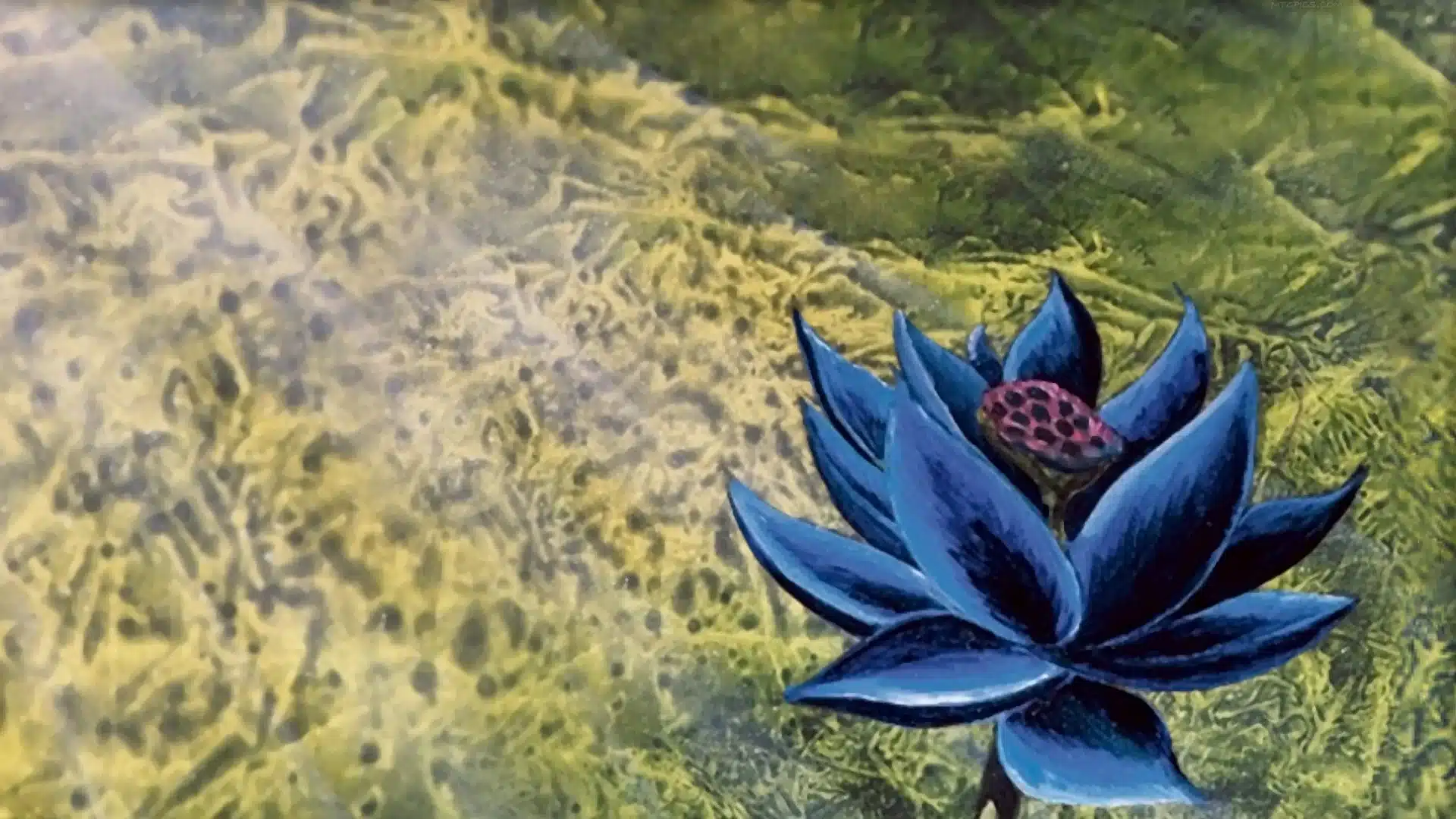The MTG Black Lotus is, by far, the most iconic card in Magic: The Gathering. For pretty much all of Magic’s 32-year history, it’s been a superlative card in all sorts of ways. It’s the most powerful, most expensive, most infamous card Wizards of the Coast has ever designed. It’s also fairly complex, with a layered past that goes back longer than many Magic players have been alive. Today, we’re diving deep into what makes this piece of trading card history so special, and so notorious among players.
What Is Black Lotus In MTG?
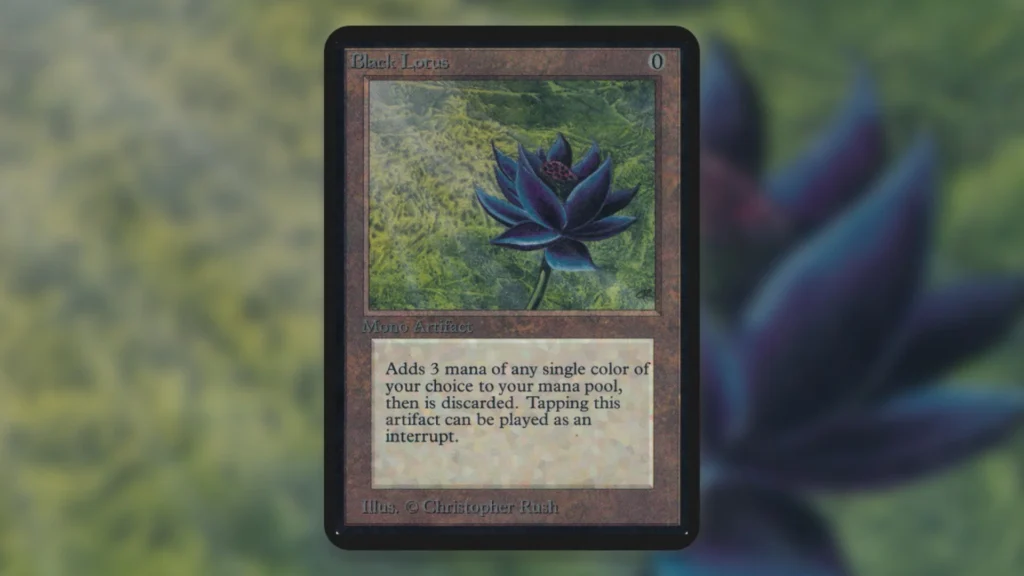
Black Lotus is a zero-mana artifact with a single, straightforward effect. You can tap and sacrifice it to generate three mana of a single color. Despite this simplicity, Black Lotus is an absurdly powerful Magic card.
Put simply, Black Lotus gives you three mana for nothing, and it doesn’t even take up your land drop for the turn. This can easily give you four mana on turn one, allowing you to drop an early threat and run away with the game. You can alternatively save it for your opponent’s turn, to fuel countermagic and the like. Basically, it’s a massive resource advantage that comes at no real cost to you.
Because of this high power level, Black Lotus is considered part of Magic’s Power Nine. This is an elite group of nine cards from Alpha that were huge outliers in terms of power. The Power Nine are: Ancestral Recall, Black Lotus, Mox Emerald, Mox Jet, Mox Pearl, Mox Ruby, Mox Sapphire, Timetwister, and Time Walk.
Black Lotus is also part of the Reserved List, which is a list of cards Wizards of the Coast has legally committed to never printing again.
What Is An MTG Alpha Black Lotus?
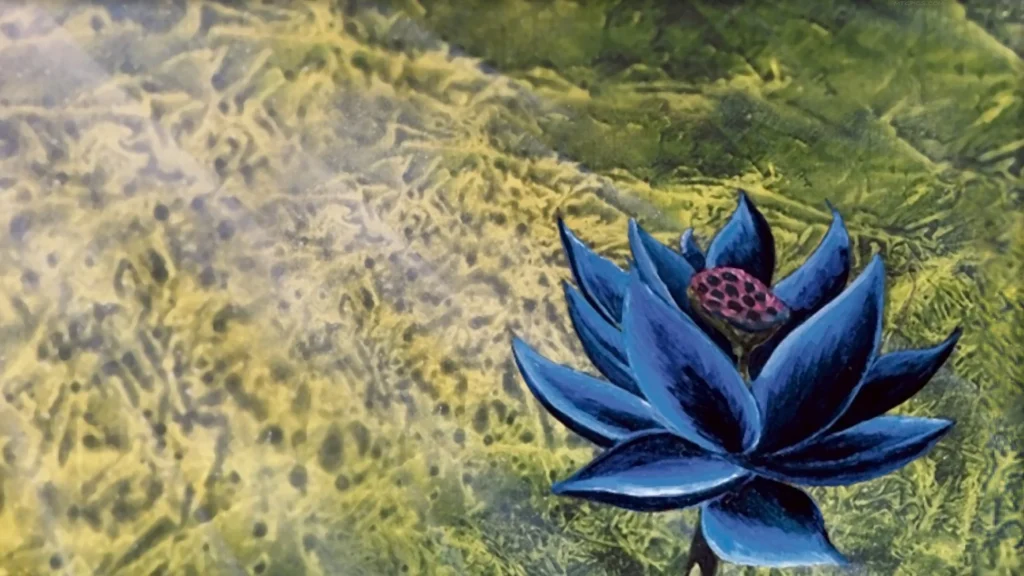
An Alpha Black Lotus is a copy of the card that comes from Magic’s very first set, Alpha. Also known as Limited Edition Alpha, this set was released in August 1993. It featured 295 unique cards, split into commons, uncommons, and rares. Black Lotus appeared in the set in the rare slot, which meant it was one of the trickier cards to open. You’ll often hear players refer to an Alpha Lotus as the Holy Grail of Magic: The Gathering collecting, and with good reason. The Alpha printing of Black Lotus is the rarest one, and therefore the most valuable.
Black Lotus was reprinted in black-bordered form in Limited Edition Beta in October 1993. Its final functional printing came as a white-bordered card in December 1993’s Unlimited.
The card has seen several non-functional printings since then, in products like Collectors Edition and as a promo for the Vintage Championships, but you cannot play them in a tournament deck. Only the Alpha, Beta, and Unlimited printings are playable in a tournament setting.
How Many Black Lotus Are There?
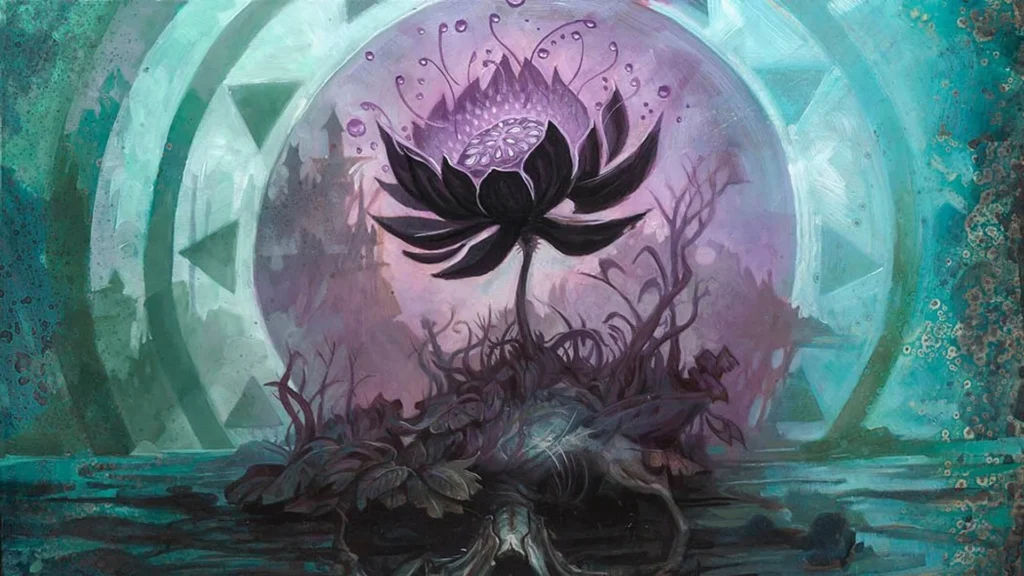
By current calculations, there are around 21,000 playable copies of Black Lotus out there in the world.
In a Facebook post back in 2021, former Wizards CEO Peter Adkison shared a breakdown of the print runs for Magic’s original duo of sets. This post confirmed that 1,008 copies of each Alpha rare were printed in total, as well as 3,025 copies of each Beta rare. This gives us a total of 4,033 black-bordered Black Lotuses out in the wild.
Calculating the number of white-bordered Unlimited Black Lotuses is trickier. No real official information has been given on the print run of this set, outside of a couple of early MTG books listing the full print run at 35 million. Breaking this number down, the number of Black Lotuses printed here is likely around 17,000. That makes 21,033 playable Black Lotus cards in total.
This isn’t a lot, and it’s also all we’ll ever get. Black Lotus is part of the Reserved List due to its power level, which means Wizards can legally never print it in a functional form again.
Why Is Black Lotus So Expensive?
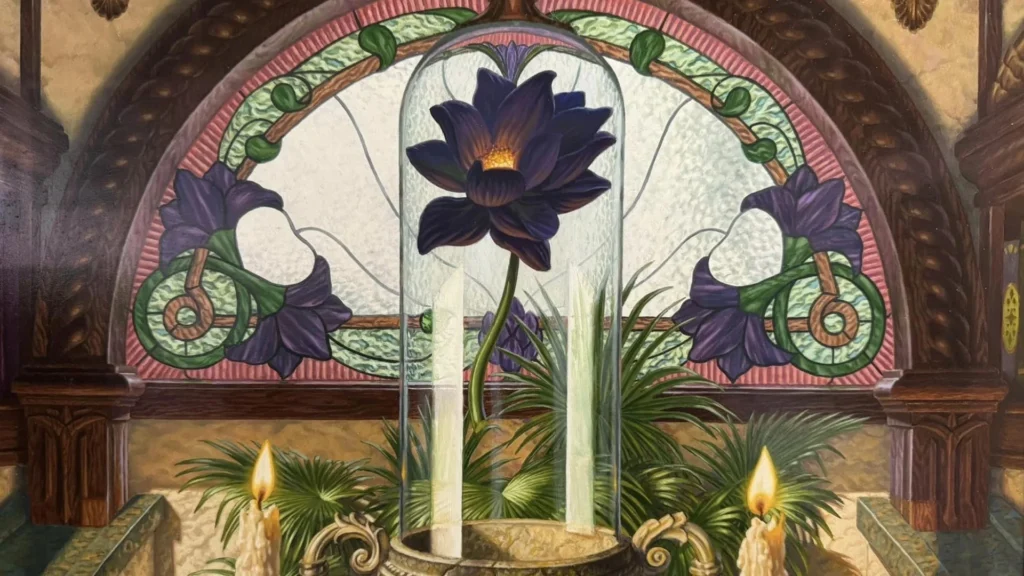
Black Lotus is a ridiculously expensive card for a number of reasons, including Vintage demand, low supply, and its iconic status in trading card history. While it wasn’t ridiculously expensive early on, these days it’s the most expensive non-promo card in the game. On TCGPlayer right now, Unlimited copies of the card go for around $11,000, Beta copies for around $19,000, and Alpha copies for around $53,000. Those are all heavily played copies, too.
Last year, an Alpha Lotus with a CGC 10 grade sold for $3 million, making it the most expensive MTG card of all time by current records.
There are several reasons for this high price tag. For starters, Black Lotus is an absolute staple in Vintage. This is the only format where the card is still legal, albeit restricted to one copy. Naturally, every deck can benefit from a card this good, so every Vintage deck needs a copy of Black Lotus to be the best it can be.
The low supply is another factor in the card’s price. There aren’t a ton of copies of the card out there, and those that are were all printed in 1993. This means players have had 32 years to damage and lose copies of the card, thus reducing the pool of viable copies even more.
Finally, a lot of Black Lotus’s value is down to its cultural significance. The card is a hugely recognizable icon, known even to people who don’t play Magic themselves. Cards with that kind of myth built up around them pretty much always command a premium, especially if the myth is justified as it is in this case.
Is Black Lotus Banned In MTG?
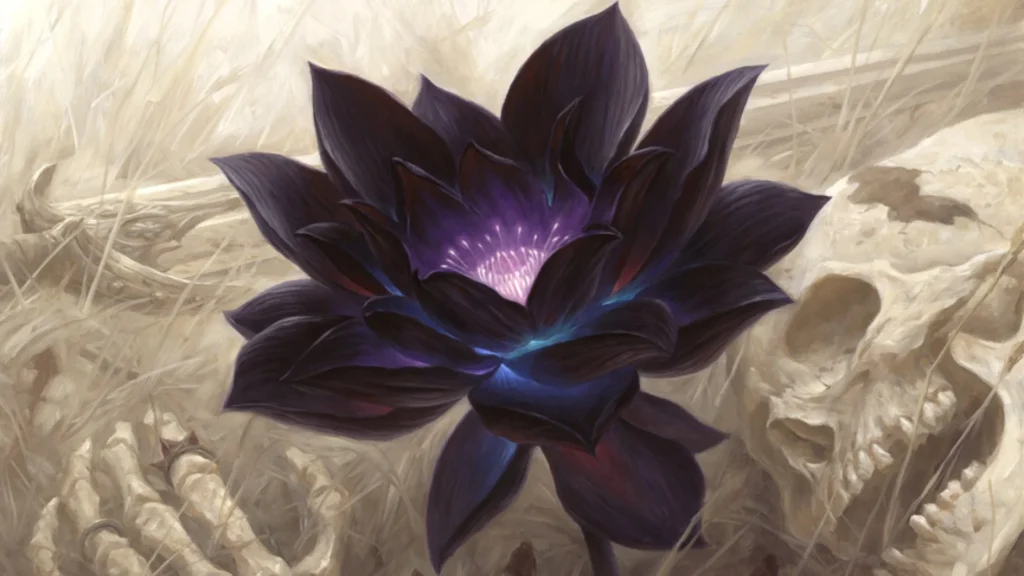
Black Lotus is banned in every MTG format except Vintage and Canadian Highlander. Even in those formats, you are only allowed to play one copy of Black Lotus in your deck. The card is outright banned in Legacy, Commander, and Oathbreaker. Considering the card’s ridiculous power level, this isn’t particularly surprising.
Even early on, Black Lotus was a troublemaker ban-wise. In fact, it was one of the cards responsible for the introduction of Magic’s four-copies-per-deck restriction. Since players could run any number of a card early on, a bundle of Black Lotuses, Channel, and Fireball could easily end games right away. Adding the restriction fixed this problem and paved the way for Magic as we know it now. When the banned/restricted list was introduced to the game in January 1994, Black Lotus was one of the very first cards on it.
Because of its power level and huge price tag, this is unlikely to change anytime in the future. Wizards has kept cards like Library of Alexandria banned in Commander due to pricing issues, and Black Lotus has them way worse. Lotus is also just far too powerful for the modern game. The card creates wildly imbalanced games and is a relic of a design philosophy that no longer applies. Despite all this, it remains Magic: The Gathering’s most recognizable icon, even in 2025.
Stick with us here at mtgrocks.com: the best site for Magic: The Gathering coverage!
